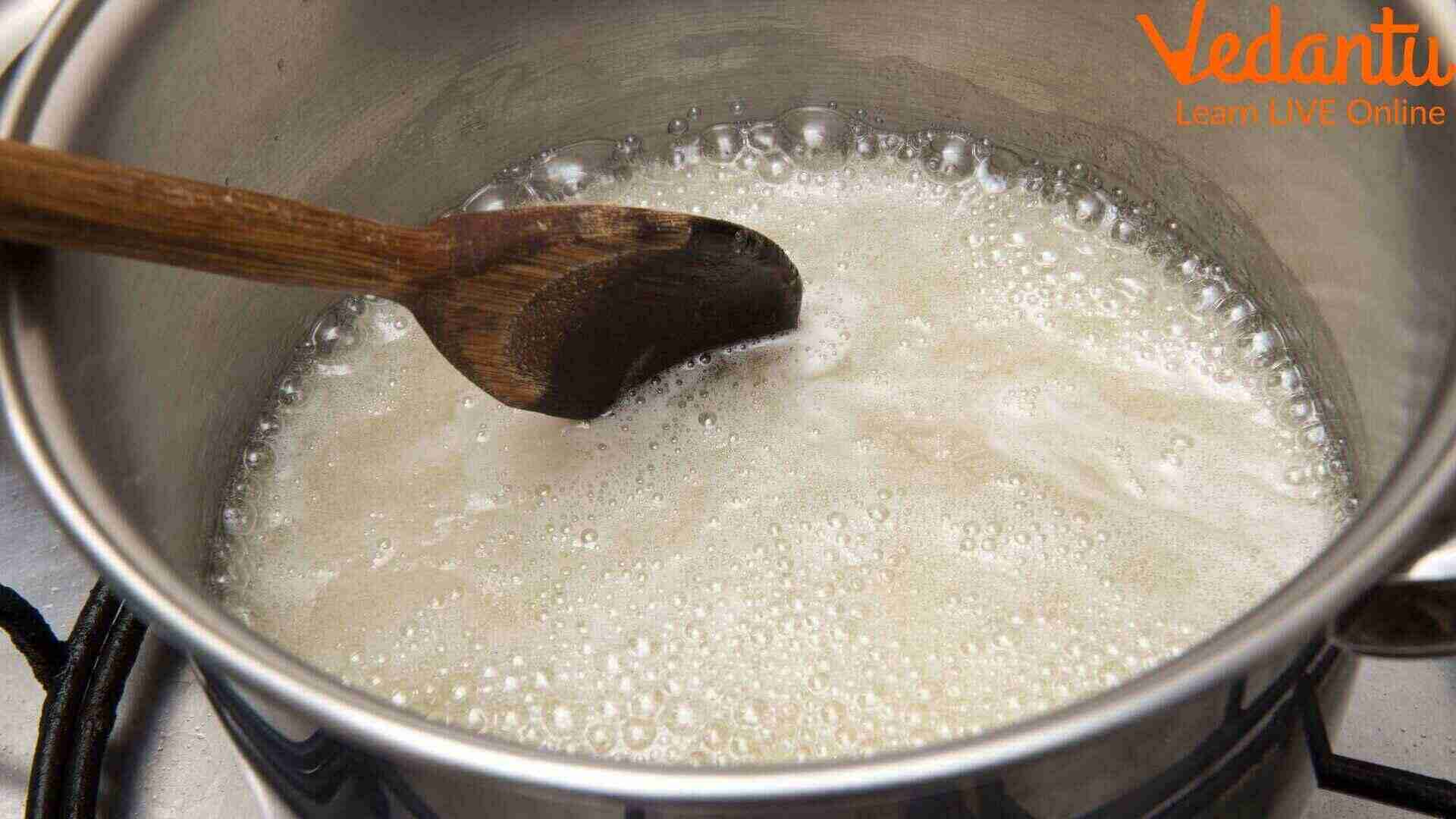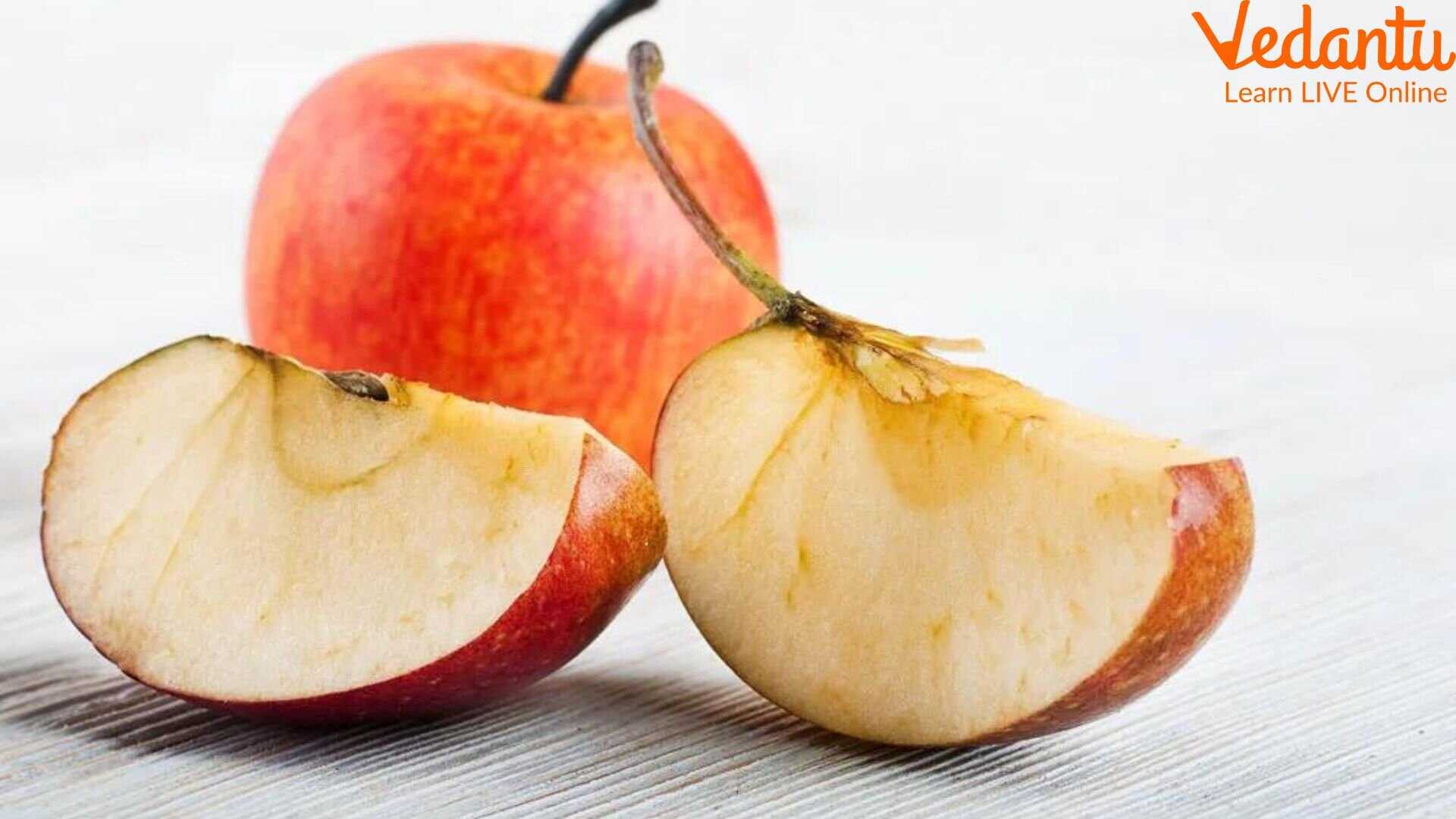Chemistry in Kitchen
The art of cooking involves various chemicals. Their compositions keep changing whenever we apply heat or cold and even cut our foods. ‘Kitchen Chemistry’ is a live stage performance of identifying and studying the basic science we practise daily in our home’s kitchen.
Heating, boiling, freezing, mixing, smashing, blending, etc., are all varied processes we perform daily in our kitchen. While cooking food, many physical and chemical reactions simultaneously convert the ingredients involved into their desired forms. Chemistry is usually perceived as a complex Science. All the chemical reactions in the kitchen engaged in cooking make its complex Chemistry, and we, too, experience our food in a complicated manner. Read through this article to learn more about your daily Chemistry in the kitchen.
Chemical Reactions in Kitchen
Whenever we hear the terms chemical changes or chemical reactions, the first thing that comes to our mind is explosions or some experiments performed in the laboratory. Most chemical reactions that occur in our everyday life are very subtle. Chemistry has never been considered by most of us as a funfilled study.
Mixing and blending food ingredients often give rise to chemical reactions in the kitchen, out of which many could be beneficial in cooking. Understanding the reason behind each of these reactions will help you cook better. However, lessons learnt in the kitchen can be a delightful and innovative way to get familiarised with some basic concepts of both cooking and chemistry in the kitchen.
Different Types of Kitchen Experiments
Not all and every reaction you witness is chemical. When a new substance is formed due to a reaction, only you experience a chemical reaction. Let us look at the various kitchen experiments that cause chemical reactions in our daily lives.
Caramelisation
Most of us love the taste of caramelised food. Caramelisation is a slow cooking procedure that happens when you cook sugar over low heat, changing the build and flavour of the item being cooked. Through pyrolysis, the sugar in the food gets oxidized, turning into a brown colour. The sugar is observed to melt, boil, produce foam, and darken through this process. Caramelised sugar has a rich, slightly sweet, but nutty flavour. You may either lightly or darkly caramelise your food as per your taste.

Caramelising Sugar
Maillard Browning
Maillard browning is a chemical reaction, often known as the browning reaction, that is accountable for the browning and the aroma of food as it gets cooked. It usually occurs between the building blocks of protein i.e., the amino acids and carbohydrates known as reducing sugar.
When heat is applied during cooking, it whisks up and continues this complex process, thus elevating the food's taste, aroma and appearance.
Emulsification
The process by which two immiscible liquids, like water and oil, get mixed while one disperses as small droplets within the other is known as emulsification. When it comes to the kitchen, emulsification occurs when these two liquids comprising of an organic phase, i.e., oil, and an aqueous phase, i.e., water, get stabilized by adding a food-grade emulsifier i.e., surfactant.
One great example of emulsification is mayonnaise or sandwich spread which consists of egg yolk and oil. In normal circumstances, these two won’t mix, but once you start whisking the oil slowly and gradually into the egg yolk, they transform into a stable composition that won’t separate.
Oxidation
Oxidation is a chain reaction that occurs in the presence of oxygen and is liable for the deterioration of food quality. This causes the food to be stale and smells bad. It is mostly observed in fruits and vegetables, causing them to turn brown, a process called enzymic browning.
If you cut an apple or an avocado into pieces and let them remain untouched for over an hour, you will notice their colour turn brown. This is because the tissue in apple or avocado pieces is exposed to oxygen from the air, thus, triggering an enzyme called polyphenol oxidase resulting in the brown colour.

Oxidation in Apple
Acid-Base Reaction
Acid and base reactions play an important role in our everyday life, from the digestion of food we eat to the functioning of the medicines we take and even the cleaning products we use. Bases are essential in baking as they can react with acids and release carbon dioxide bubbles. Baking soda is the most frequently used base in the kitchen.
Mixing baking soda thoroughly with an acidic element, like vinegar or lemon juice, strongly forms fizzes. You can easily use this mixture to clean your kitchen surfaces. Also, when you mix the baking powder with acids like yoghurt or sour cream, it forms carbon dioxide bubbles. This helps baking goods like cookies and biscuits to rise and become fluffier.
Testing the Effects of Salt
Salt is one of the most crucial ingredients used in every household regularly. It not only adds taste to your food but also has a few astounding properties. Here are a few ways of testing the effects of salt in your daily life:
Firstly, to enhance the taste of our food we use salt. It helps bring out the natural flavours in some foods and makes foods like potatoes, pasta, etc. palatable that are usually bland.
Salt brine helps dehydrate bacterial cells within foods, adjusting the pressure and hindering the development of bacterial growth. This reduces spoiling and increases the lifespan of food.
Salt is known to be a binding agent. It helps extract the myofibrillar proteins present in processed and formed food, especially meat, by binding them together and reducing cooking losses.
The solubility of muscle proteins is also increased by salt. Stable emulsions are produced during sausage making when the salt soluble protein solutions cover finely formed globules of fat, thus, providing a binding gel that consists of fat, moisture and meat.
Salt enhances the development of colour in food. When used with sugar and nitrate or nitrite, it produces colour in processed food consumers' favour.
Salt helps strengthen the gluten in bread dough, thus, giving it a uniform texture, grain and strength, letting it expand without tearing from between.
Salt inhibits the growth of bacteria, yeast and moulds in baking foods, thus, controlling fermentation.
Conclusion
We can conclude that kitchens are filled with various chemicals (ingredients) that react with each other to form new components while adding different textures, tastes and smells. These chemical reactions in the kitchen we come across every day help us understand and learn more about each ingredient and its usefulness. We must always take proper precautions to experiment with these items safely in our kitchen.







